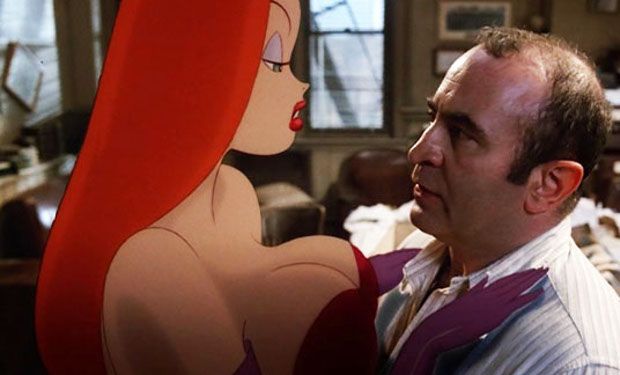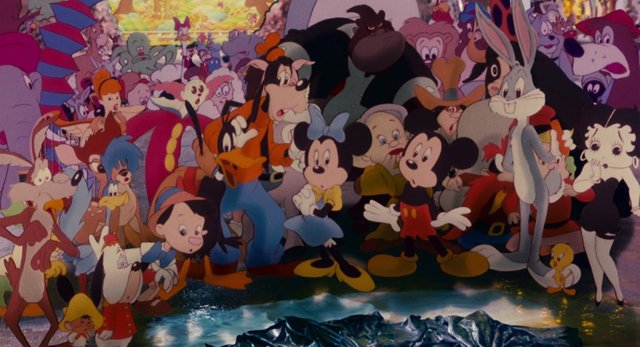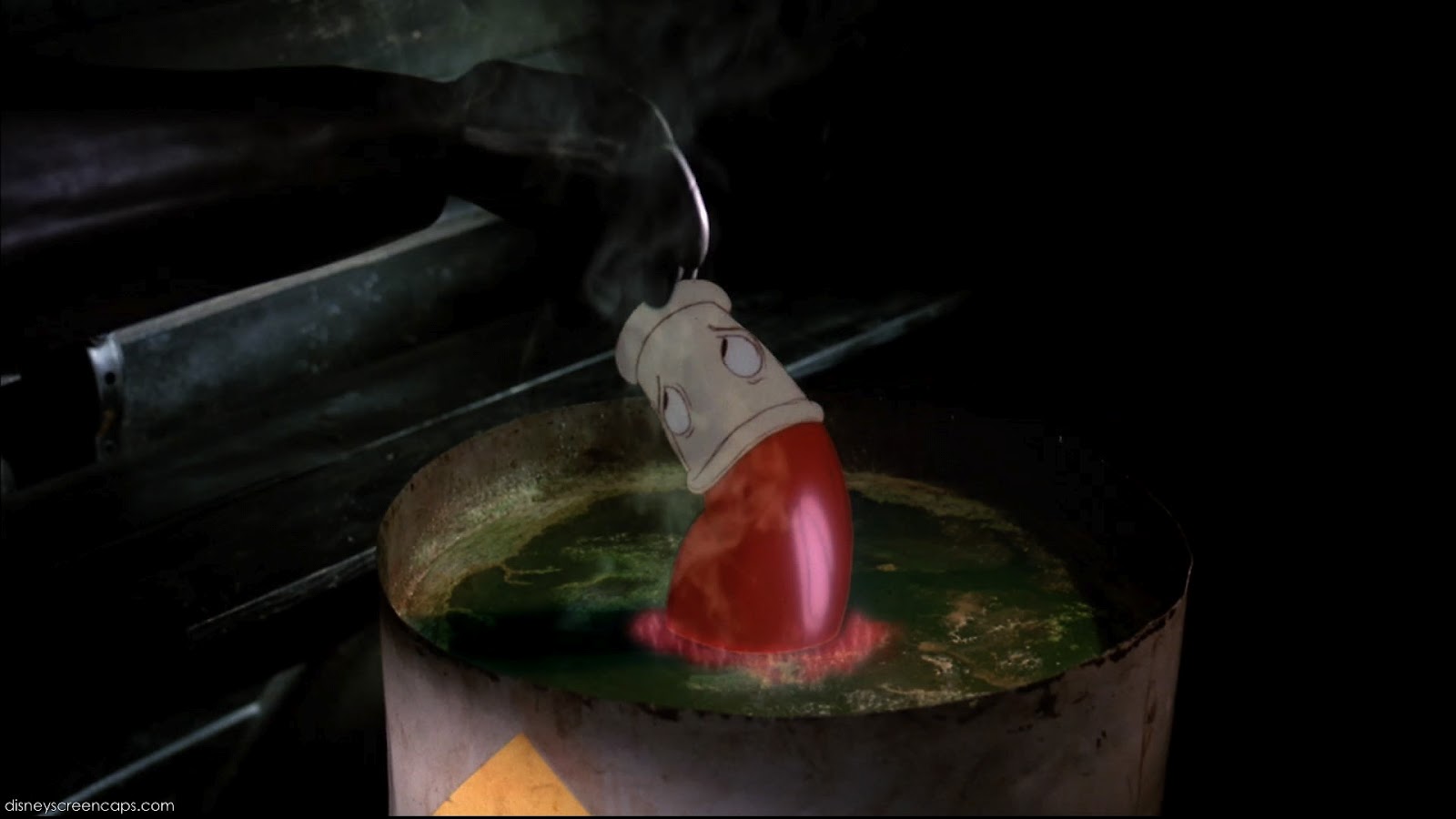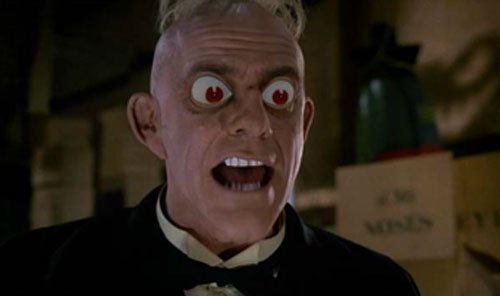If you're like me, you probably haven't thought of the film "Who Framed Roger Rabbit" much since you were a kid. I watched the VHS often not knowing what I was missing. So when I saw it on Netflix I thought it would be a fun throwback to watch.
I remembered a mixed live action/animated tour de force and a technical marvel that holds an entrenched spot in the pantheon of movie originality. What I didn't expect to see was a film about race, class and the making of L.A.

This noir film cast shadows on the state of unrest between African Americans and whites in the 1940's. Each of the characters seems to represent a section of society in the 1940's. Characters and scenes are used to represent these two sides of society in the forties. Specifically, the toons represent the underclass black minority while the humans represent the middle and upper class white Americans. This movie shows specific examples of racism, prejudices and segregation. An unflinching allegory in a noir film with well crafted jokes and cartoon hi jinx. The film takes a deep dive into old Hollywoodland nostalgia without shying away from racial and class disparities, in fact basing the entire storyline around them with cameos from Tweety Bird, Mickey, Bugs, and Betty Boop.

The year is 1947, the setting: CA. A world where toons walk among us and toon rules apply for toons and human rules apply for man. The cartoons we all know and love are shot on soundstages just like old films. Here, in Los Angeles we find two different living arrangements or ghettos: one that is predominately human and the other that is predominately toon. The "humans" represent the middle and upper-class white society and the "toons" represent the lower-class minority society.
Like we see in many rundown neighborhoods, the inhabitants are forced to perform inappropriate activities in order to make money (prostitution, drug-dealing, etc.) or low wage labor like the fantasia brooms. They aren't allowed to take "human" jobs.

They have segregated clubs where toons can perform or work at but can't be patrons(like the Cotton Club), even someone like Jessica Rabbit might be blackmailed into "playing pattycake" on the side. Even those that make it into film work for "peanuts"(a pun for Dumbo). No joke in this film is wasted, further illustrating the complex emotional and socioeconomic relationship between humans and toons. A rich patron might be a sugar daddy for a beautiful songstress like Jessica Rabbit and head to her dressing room after hours to "play pattycake" resulting in a detective taking photos that provide a flip book of the two clapping hands together.
In comes private detective Eddie Valiant. We soon find out that he has a hatred for toons and toon society because a toon killed his brother by dropping a piano on his head. Reduced to a sad drunk his racism is more subtle and realistic than any virtue signalling program I've seen. You see he previously had friendships with Toons like how he knew Betty Boop back in her better days, worked Toontown and enjoyed it but that tragedy really brought out the worst in him.
The events with his brother changed him producing a hate so deep you can hear the actor almost use toon like a slur when he says "I don't work for toons". and punches a man for even insinuating he'd taken a job from one. However, he has to use Roger, as well as other toons, in order to help solve the case of the Acme's murder. He begins to trust and even LIKE Roger and some of the other toons.
.jpg)
Roger Rabbit (a toon) represents the underclass African American society. Roger has become the minority scapegoat for the dominant human or white society. He was accused of killing the white human character Marvin ACME, the owner of Toon Town. Roger is immediately sentenced to die by a fatal dip (in a horrible acid bath) at the hands to Judge Doom without trial. This represents society in the 1940s, where there was no justice for the minority and punishment was harsh. No one would have thought twice if it was reversed and a toon was killed. This mimics American society in a frightening way. African American men suffer much harsher sentences for crimes committed against whites than vice-versa. This seems like an overt attempt by the filmmaker to illustrate (pardon the pun) some of the problems of American society.
Our antagonist Judge Doom is a judge who acts as jury and executioner, publicly killing toons with a substance called "dip" making a grand show of it when they get out of line (in his opinion). He lets everyone know a human has been killed by a TOON and that toon will face his brand of justice, not by trial or jury. Judge Doom is a symbol of hate and bigotry towards the toons, much like the Ku Klux Klan. It is interesting that much like the hoods that cover the Klan's faces, Judge Doom is concealing his true identity behind the mask of a human. Judge Doom has the weasels help him in catching Roger Rabbit and carry out his execution even though they are toons as well which represents the ?uncle tom? archetype. The typical stereotype of color plays a factor. It is also interesting that the weasels are of a dark complexion while the Judge has a pale white complexion.

At the climax of the investigation, Valiant finds out that the very human Judge Doom is actually a toon in disguise and not JUST any toon, but the toon that killed Valiant's brother. His entire plan is literally gentrification of Toontown.
Having bought the streetcar industry to shut it down he plans to bulldoze ToonTown and in it's place build a highway, hotels, fast food restaurants. A plan that sounds a lot like what actually happened to the streetcar industry as well as public transport in many American cities as well as highways destroying old ethnic neighborhoods.
Through this plot twist, Valiant learns that not only are toons people with a quality of life, but also that humans can be just as nasty as toons through those that collaborated with Judge Doom. Doom after all is a judge who earned his position through bribery with funds received from robberies, then openly acted as an executioner. He learns that who we are is inside our heads, not in our skin color. (or how we're drawn to reference the Jessica Rabbit quote "I'm not bad I'm just drawn that way")

Seriously as a cartoon lover and a history lover, there’s a reason why Who Framed Roger Rabbit is now one of my favorite cartoons. As somebody that grew up in a softened cartoon era used to saying "Disney would never allow this, with their characters in it" It's beautiful to see something so subversive and so detailed. Maybe we as a society can someday bridge the racial gap in the same way as Eddie Valiant.
I love your movie capture. Ha ha the matter of the right moment
Downvoting a post can decrease pending rewards and make it less visible. Common reasons:
Submit
I've probably seen RR like 12 times when I was a kid. I always felt uneasy about the inequal treatment of toons, but didn't thought it through back then. On the other hand, I really liked cartoons and thought grownups were stupid soooo.... #unbiased? 😉
Love the analysis!
Downvoting a post can decrease pending rewards and make it less visible. Common reasons:
Submit